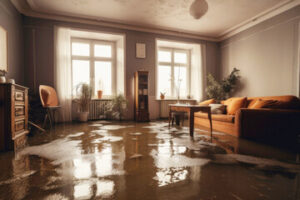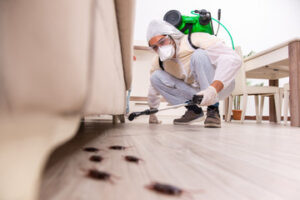Under the Americans with Disabilities Act, service dogs can accompany their disabled handler into most public spaces including restaurants and hospitals. This requires a dog with calmness, focus and good health that is trained to perform specific tasks.

Although you can train your own service dog, a professional program is often recommended for advanced training and public access work. Read on Service Dog Certification California for more information.
A Service Dog is trained to provide a variety of trained behaviors to assist their handler with disabilities. These behaviors may be passively-available or actively requested. Examples include guiding a blind person through an environment, alerting the deaf of approaching noises, pulling a wheelchair, retrieving objects or medication, detecting changes in blood sugar levels or assisting with seizures. They can also remind the person to take their medication, find a person during an anxiety attack or help steady the handler when they experience dizziness or disorientation due to mental health medications.
A well-trained Service Dog is comfortable in a wide range of environments. This means they can work in public places such as grocery stores, restaurants and shopping malls, as well as on airplanes and buses. They are able to remain focused on their tasks in the midst of distractions. They must be comfortable around other people, including people with strollers and wheelchairs, and can use elevators and escalators without issue. A good temperament is also important, as the dog needs to be excited to work but able to settle and focus for hours at a time.
Training a Service Dog takes patience, consistency and a lot of practice. It is best to break each task into small steps and work on them daily to ensure the dog can perform them in different environments. Some tasks are harder than others, so it is important not to rush through the training. Exposing the dog to new environments early on helps them acclimate and become less nervous in public settings.
It is common for handlers to train multiple dogs, and this is allowed under the Americans with Disabilities Act guidelines. For example, a person may have one small breed dog that does psychiatric and medical alert tasks and another larger breed dog that provides mobility assistance. The person will likely use both dogs for public access, but each will have a specific set of tasks that they will work on with the trainer.
To keep a Service Dog happy, healthy and performing to the best of their abilities, they need to be allowed to sleep in between shifts, get regular exercise, have downtime and playtime and be given treats and positive reinforcement on occasion. They will need to be brushed regularly and receive regular veterinary visits, and should also be on a schedule for vaccinations and parasite prevention.
Training
Training is the key to a successful service dog. Most people obtain their service dogs from organizations that train them for a year or more before turning them over to their handlers. Others work with a private trainer to train their own dogs. This option is generally more difficult and requires significant commitment from both the handler and the dog.
The trainer will typically spend several weeks introducing the dog to different environments and teaching it basic obedience commands such as sit, stay and come. The trainer will also teach the dog to respond to various sounds, such as a knock on the door, a telephone ringing and a fire alarm. The trainer will also teach the dog to retrieve objects, open doors and turn on and off lights.
Once the dog has mastered these basic skills, the trainer will begin training more advanced behaviors such as recognizing when its leash is dropped and returning to its handler. The trainer will also evaluate the dog’s general demeanor and attitude in public, including the ability to ignore distractions and remain calm.
If the dog passes the PAT, it will receive its official certification and be allowed to accompany its handler into most public places. The PAT tests the dog’s ability to perform its tasks in a variety of different settings, including restaurants and shopping centers. The dog must be able to calmly and quietly walk through the crowds, ignoring other people’s animals, and navigating stairs and elevators.
Some types of Service Dogs require additional, more specific physical tasks such as picking up medication for a diabetic owner or retrieving a wheelchair from the floor. Other Service Dogs must be trained to respond to medical emergencies, such as sensing a seizure or alerting the handler’s doctor to changes in glucose levels.
Some Service Dogs are specifically trained to assist children with autism or other psychiatric conditions. These dogs may be trained to assist with reading and writing, reducing anxiety by distracting the child, or to help them escape a dangerous situation. Some Service Dogs are even trained to assist with daily chores such as retrieving groceries and getting the mail.
Requirements
As the name suggests, service dogs must be specially trained to assist their handler with something related to their disability. They must be able to help with mobility issues, providing support and stability, bracing or carrying the person (depending on the disability), retrieving items for their owner, alerting their handler of a fire alarm, knock at the door, or phone call and more. In addition, they must be fully housetrained and well-behaved in public. While it is possible for a disabled person to train their own service dog, many choose to work with professional organizations like Guiding Eyes for the Blind or Assistance Dogs International (ADI).
Training to become a service dog is a long process. The training must be specific to the person’s disability, but it also needs to include basic obedience, training in public and in restaurants, and proper socialization with other dogs and people. Reactive, disobedient or untrained dogs are not considered to be able to perform as service animals and do not qualify for certification.
Once the dog has completed its training, it must be able to successfully pass a Public Access Test (PAT) in a variety of different settings and situations. The PAT is designed to assess how the team works in public, from restaurants and shopping centers to medical buildings and government offices. The tests typically require the dog to enter a building calmly, exit the building with you, remain at your side in a vehicle, and follow your instructions when navigating a restaurant.
In addition, the dog must be able to recognize when its leash is dropped and retrieve it, and it should remain calm under the control of another person, whether that person is a trainer or stranger. Other modules may include a demonstration of the dog’s ability to sit, wait and lie down while on a crowded street or in a busy mall, as well as its response to a fire alarm and other distractions.
Certification
Service dogs must be well-trained in tasks that mitigate their handler’s serious life-altering disabilities. They must be able to focus and remain calm for hours at a time, which can be physically challenging for them. They must also have good obedience and housetraining, as well as the ability to work in public spaces.
Service Dogs can be trained by the person with their disability or by a professional training program. While professional training isn’t required by the ADA, it can make access and legal issues easier for the team. In addition, a professional trainer can help train a dog for specific tasks, like retrieving items or responding to medical alerts.
Once a dog has been professionally trained, they are certified to perform their tasks. This process includes a public access test (PAT) with their handler. This allows the handler to bring their dog into areas that would otherwise be off limits.
Generally, businesses are allowed to ask two questions: 1) is the dog a service animal required due to a disability and 2) what work or task has the dog been trained to do? There is no nationally recognized certifying organization for service dogs, and any “certificates” or ID cards you can buy online are not legally binding. In fact, they can actually cause problems for legitimate teams by misleading people into thinking that the dog is trained.
Some individuals may have more than one Service Dog, which is allowable under the ADA. For example, they might have a small breed that does psych and mobility tasks and a larger breed that provides a service for access.
While Service Dogs are not required to be microchipped, it’s a good idea. In case of an emergency or if someone steals the dog, it makes it easy to identify the owner. In addition, it’s important to have a collar and a vest that clearly identifies the dog as a Service Dog. This will help you avoid discrimination when entering restaurants, shops and other public venues. Having ID will also make it easy for you to take your dog into pet stores and other places that usually don’t allow pets.


